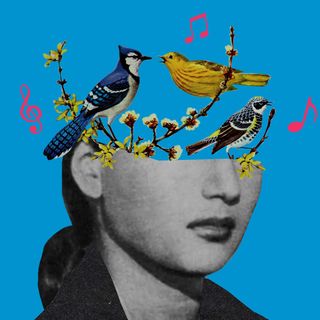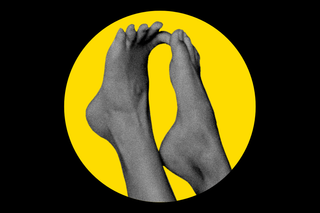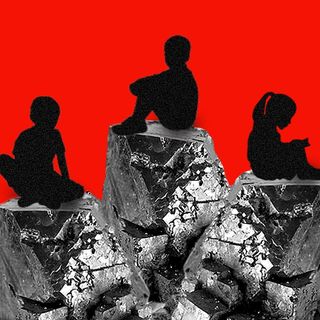
Why Is Having a Foot Fetish Taboo?
The sexual inclination toward feet has been linked with deviance and disability — but shows interesting insights into human sexuality.

Put simply, a foot fetish is when someone is sexually aroused by feet to the extent that feet are a necessary part of their sexual experience. For others who are merely turned on by feet, it’s a kink for feet. The science says that many people have a foot fetish — and yet its depiction in popular culture is fraught with undertones of deviance and disability. Take episode nine of HBO’s House of the Dragon — in which Lord Larys, a visibly disabled man who uses a walking aid, is shown to have a foot fetish. Normally there would have been nothing wrong with this portrayal — except for the fact that Larys’ disability is always alluded to as a driving force behind his twisted scheming. It’s a quid pro quo: he shares important secrets with the Queen, in return for a chance to get off to her feet.
“We should’ve known someone with a malformed foot who killed his family might have a foot fetish,” Entertainment Weekly noted, adding that the episode’s director called it “a really dirty scene.” And not dirty in a good way.
The sliminess with which both a foot fetish and disability are portrayed in the episode isn’t new. Pop culture has frequently depicted it as a deviant, even sick affliction. In Euphoria, a teenage character Kat starts camming — and she encounters a man with a humiliation kink and a micropenis who begs for photos of her feet. There are unsavory undertones to the whole plot — wherein the foot fetish is part of a crop of deviant sexual pleasures that socially outcast men demand from women. And in the rare instances that foot fetishes make their way into the media, they appear as crime reports involving serial killers like Ted Bundy, or more low-profile sex offenders given monickers like the “Toe Suck Fairy.”
But a foot fetish can be far more interesting than what pop culture and the media depict. Way back, Freud theorized that people may be attracted to feet due to their resemblance to penises. But other theories since have suggested that foot fetishes may arise simply due to a learned response. In any case, of all the fetishes related to human body parts, foot fetishes are the most common. It’s sometimes linked to a humiliation kink in that feet are considered low or dirty. It could also be put down to simple biology — we have a lot of nerve endings in our feet. There’s a difference, then, between feet as erogenous zones on our own bodies, and feeling sexually aroused by the sight of someone else’s feet.
Related on The Swaddle:
The Difference Between a ‘Kink’ and a ‘Fetish’
People have not only been turned on by feet for a long time, but they’ve also turned their kink into art. In the second century AD, someone named Philostratus wrote an entire love letter to someone’s feet. “… walk softly and leave prints of your own foot behind you, for those who would love to kiss them,” it reads. Further down, Victorian poets wrote long odes to feet, influencing dancers like Isadora Duncan whose “politicized theory of dance, strongly indebted to ancient Greek art, centered on the emancipation of the naked foot and of the female body,” as one article notes.
“Most people with this fetish are only aroused by the feet of people they are attracted to – not anyone’s foot. Some folks are aroused by admiring feet but have no interest in physical contact with them, while others are aroused by licking feet, foot jobs, or even foot penetration,” Davis-Fainbloom told Insider. It can entail foot “worship” or something more gentle, like massages and pedicures, according to dominatrixes who engage in foot play.
But there’s something off-kilter, subversive, and queer about fetishes in general, including foot fetishes. “Some find toes phallic and this is what turns them on. In certain cultures feet are taboo and it’s the risk of going against social rules they find titillating,” clinical sexologist Ness Cooper told Mashable. Moreover, foot fetishes are more closely associated with queerness. “This could be due to the destabilizing nature of queer sex as flipping the script, perhaps as a way of transmuting the energy from one of objectification (consensual) to one of human elevation and admiration,” said Oli Lipski, a queer sensual intimacy coach.
“… role-playing a foot fetish in a heterosexual dynamic could prescribe to more heteronormative ideals of objectifying the feet as distinct objects, separate from women’s bodies. Whereas foot worshipping in a queer context could offer up the whole person with their feet as parts of the desired recipient to be worshipped. In either scenario, being aroused by feet is entirely normal,” Lipski continues.
Foot fetishes are taboo, which, arguably, stems out of deep-rooted anxiety for what it says about human sexuality as a whole. Straight culture has sexualized other non-genital body parts like breasts, buttocks, thighs, and stomachs. Feet may be less common, but they still arise as a challenge to the normative aspects of sexuality and culture itself: asking why it is that being aroused by some body parts is “normal,” but others aren’t. In short, taking foot fetishes seriously leads to a disruption in our common assumptions about sexuality itself.
Related on The Swaddle:
A Fetish Called Mysophilia May Be Why People Want to Buy Dirty Bathwater Online
There’s a curious link, moreover, not just between fetishes and queerness, but also between fetish and disability. “I have realized for a long time I have a foot fetish. I find it very sexually attractive,” Rakshit, a visually disabled person, told The Swaddle. Among others, Rakshit is also turned on by the glisten of sweat on skin, the sharing of a cigarette, or there being a visible part of skin under someone’s clothes. These are all telling of how human sexuality is vastly complex in range — involving the mind as much as it does the body.
Science shows that the brain areas associated with feet and with genitals are close to one another — close enough, in fact, that some overlap or blurred boundaries are possible. Vilanayar Ramachandran, director of the Center for Brain and Cognition at the University of California, San Diego, discovered this link when he studied the phantom limb phenomenon in people without a foot and found that some people were aroused by their phantom feet.
But foot fetishism has also been tied to morality and puritanical codes for a long time. Think back to the 19th century in Europe, where the mere sight of ankles was considered titillating and hence, prohibited. “… the high incidence at this time of fetishes involving shoes and stockings further testifies to the exaggerated eroticism generated by the hiding of the lower half of the body,” notes historian Stephen Kern.
Some argue that foot fetishes have become more normalized today — even turning into an increasingly popular way to earn money. Take the half-ironic joke about selling feet pics when someone is cash-strapped: it speaks to a seedy subculture of men sliding into women’s DMs to request feet pictures for money. It’s the taboo associated with a fetish that’s considered deviant, however, that underlies this cultural secrecy and shame around foot fetishes. And it’s why there are more websites and even dating apps today to address the stigma.
And perhaps another reason for the taboo around foot fetishes is that they show the cracks in our moral panic around sex itself. Usually, nudity and explicit depictions of sex are censored on digital and offline platforms alike. They’re also lumped under the category of “adult” themes — ostensibly to protect children. But feet, however, are seen everywhere. For people who are sexually aroused by them, the ubiquity of feet imagery or even real-life feet can be a source of arousal. It shows, then, that sexuality is nearly impossible to regulate or control — people are turned on by things they’re not allowed to see, and by things they see too much. A foot fetish, then, shows the vast possibilities within human desire that exist outside of established norms.
Rohitha Naraharisetty is a Senior Associate Editor at The Swaddle. She writes about the intersection of gender, caste, social movements, and pop culture. She can be found on Instagram at @rohitha_97 or on Twitter at @romimacaronii.
Related


How Social Inequalities Drive Lead Poisoning in Half of India’s Children
